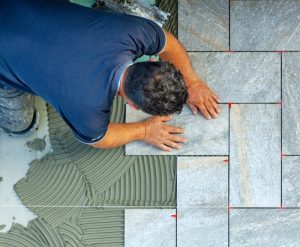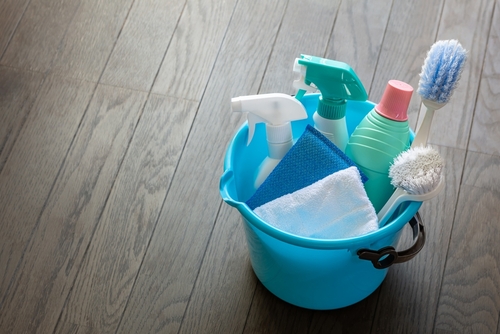1. Size Matters: Calculating the Scale of the Job
One of the primary drivers of painting costs is the size of your home. This includes both the number of rooms and the total square footage, as each wall, ceiling, and trim piece requires a certain amount of paint and time to cover. Professional painters calculate the scope of work by measuring the square footage of the areas to be painted, and the final quote reflects both material and labour requirements.
Interior vs. Exterior
The cost will vary depending on whether you’re painting interior rooms, the exterior, or both. Interior projects are often easier to calculate because they have fewer variables than exterior jobs, which may require additional weatherproofing treatments or the use of special equipment like ladders and scaffolding. Painting the exterior may also involve dealing with intricate architectural details, different surface textures, and hard-to-reach areas, all of which add to the complexity and cost.
Calculating Wall Space and Ceiling Height
In general, painters Turramurra base their quotes on square footage but adjust prices based on ceiling height and room complexity. For example, high ceilings and crown moulding require more labour and specialised skills, leading to higher costs. Some painters charge additional fees for rooms with cathedral or vaulted ceilings due to the added effort required.
2. Quality of Paint: Choosing the Right Product
The quality and type of paint you select will also significantly impact your budget. Paints come in a variety of formulations, each designed for specific surfaces and purposes, and choosing the right one can affect not only the price but also the longevity and look of the final product.
Types of Paint
Here’s a quick overview of common paint types and their typical applications:
-
Acrylic Paint: Known for its durability and water resistance, acrylic paint is ideal for areas with high moisture, like bathrooms and kitchens. It’s more expensive than standard latex paint but offers better longevity.
-
Latex Paint: This water-based option is versatile, cost-effective, and comes in a variety of finishes. It’s a popular choice for walls in living areas and bedrooms due to its ease of application and cleanup.
-
Oil-Based Paint: Oil-based paint is highly durable, making it a great choice for doors, trims, and other high-traffic areas. However, it’s pricier than latex paint and emits stronger fumes, which require more ventilation during application.
-
Eco-Friendly Paints: For homeowners seeking environmentally friendly options, low-VOC and zero-VOC paints are available. These paints reduce harmful emissions, though they often come with a higher price tag.
Choosing the appropriate type and brand of paint can significantly influence the project cost. High-quality paints generally cost more but require fewer coats, hold up longer and may save you money in the long run by reducing the frequency of repainting.
Finish Options
The finish of the paint, whether matte, satin, semi-gloss, or gloss, also impacts the price. High-gloss finishes are generally more expensive and are ideal for surfaces that need frequent cleaning, such as kitchen cabinets or bathroom walls. Flat and matte finishes, on the other hand, tend to be cheaper but may not withstand wear and tear as well.
3. Labor and Skill: The Price of Professionalism
The cost of labour is one of the most significant components of a painting project. Hiring professional house painters typically ensures high-quality work and saves time, but it comes at a premium. The rates professional painters charge vary depending on the complexity of the job, their expertise, and the geographic area.
Standard Labor Rates
Painters charge by the hour or by the square foot, with average hourly rates ranging from $20 to $70, depending on skill level and region. While opting for a lower hourly rate may seem cost-effective, experienced house painters often complete the work more efficiently and with fewer mistakes. Higher labour costs can ultimately mean better value when factoring in expertise, efficiency, and quality.
Special Techniques and Expertise
Some homeowners prefer decorative finishes, accent walls, or textured painting, all of which require a specialized skill set. Techniques like faux finishes, murals, and stencilling add depth and unique flair to interiors but often come with additional labour fees. If you’re considering these custom options, expect your labour costs to increase due to the complexity and time involved.
4. Prep Work and Additional Services: Beyond the Brush
Proper preparation is critical to achieving a professional-looking paint job that lasts. In many cases, prep work may take more time than the actual painting, depending on the condition of your walls and surfaces. This phase can involve several additional tasks, including cleaning, sanding, priming, and repairing damage.
Surface Preparation
If the walls have minor imperfections or stains, they need to be smoothed out before painting. Surface preparation may involve filling cracks, sanding rough patches, and applying primer to ensure that the paint adheres properly. These steps can add to the labor costs but are essential for creating a polished and long-lasting finish.
Priming and Repair Work
For homes with older or damaged walls, priming is necessary to ensure uniform colour and adherence, especially when transitioning from dark to light colours. Additionally, homes with water damage, mould, or peeling paint require more extensive repairs before a fresh coat can be applied. All these services increase the total cost but are crucial for achieving a high-quality result.
Other Extras
Additional services, such as moving furniture, protecting flooring with drop cloths, and covering non-painted surfaces like fixtures and outlets, can also increase labour costs. Discuss these details with your painting contractor to understand what’s included in the quoted price and whether any extras will incur additional charges.
5. The Bottom Line: Estimating Your Project Cost
Ultimately, the cost of a house painting project depends on multiple factors, from the size and complexity of the job to the quality of materials and level of prep work involved. Understanding these factors allows you to make a more accurate estimate of the project’s cost and enables you to budget effectively.
Example Cost Breakdown
As a rough guideline, here’s an example cost breakdown for a mid-sized interior painting project:
- Labour: $500 – $3,000 (depending on project size and complexity)
- Paint: $200 – $1,200 (depends on paint quality and quantity)
- Prep Work and Repairs: $150 – $1,000 (depending on wall condition)
- Additional Services (furniture moving, masking, etc.): $50 – $300
This example provides a broad range, as specific costs can vary significantly based on your location and project details. To get an accurate quote, it’s best to consult with a few professional painters who can assess your home and provide itemized estimates.
Key Takeaways and Tips
Here are a few final tips to help you get the best value:
- Request Multiple Quotes: Compare at least three estimates from reputable painters to ensure you’re getting a fair price.
- Consider Mid-Range Paints: High-end paint can be worth the investment, but many mid-range options provide excellent durability and appearance without the higher price.
- Plan for Future Touch-Ups: Retain a small amount of leftover paint for future touch-ups, as colours can be challenging to match later.
- Choose the Right Season: Painting in the off-season can sometimes save you money, as contractors may offer lower rates during slower periods.
With a clear understanding of what goes into pricing a painting project, you’re now better equipped to plan for your next home improvement. By considering the factors above, you can make informed choices, maximize your budget, and enjoy the transformative impact of a well-executed paint job.



















